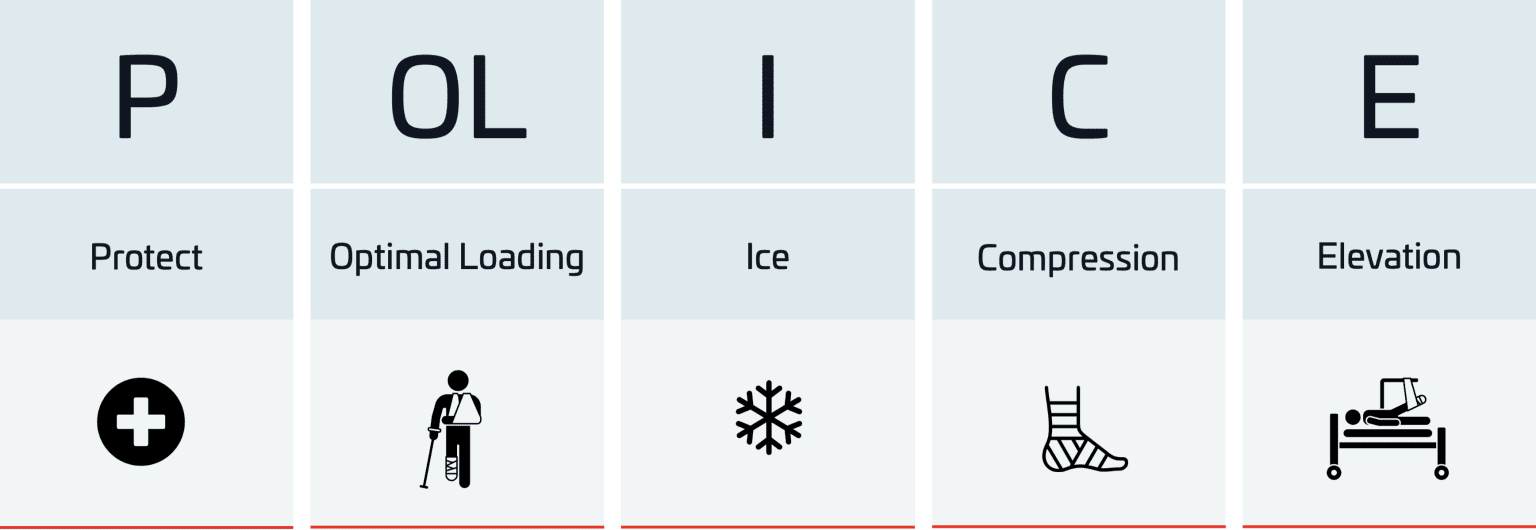
Acute care – POLICE (formerly RICE, RICEM, PRICE)
Acute treatment starts as soon as possible after the injury. The goal of acute care is primarily to prevent further injury and minimise bleeding as much as possible. Effective emergency treatment will reduce bleeding, scar tissue formation, the number of complications and the rehabilitation period. The treatment follows the so-called ‘POLICE’ principle:
P: Protection
In the first few days after an injury, it is necessary to relieve the injured tissue (e.g. joint, muscle, ligament). Excessive immobilisation has a negative effect on the healing of ligaments, tendons, muscles and ligaments and also negatively affects the surrounding tissue. Immobilisation causes joint stiffness, degenerative changes in cartilage, bone decalcification (osteopenia), muscle wasting (atrophy), etc.
OL: Optimal Loading
While offloading the injury, muscle tension and active movement should be started after 1-2 days of offloading. Slowly increasing movement and loading of the injury will help promote optimal healing, prevent loss of mobility, muscle atrophy of the injury and weakening of other tissues in the body. Movement exercises help to transport the accumulated fluid away from the area and movement can have a pain-relieving effect. It is recommended that all other non-injured tissues are trained unchanged (fitness, strength, technique etc.).
I: Ice
Ice is applied to the injury as soon as possible. The cold causes the blood vessels to contract, which stops the bleeding. Cold sprays are largely ineffective. The ice must not come into direct contact with the skin, which should be covered with a single layer of elastic bandage, for example. The ice treatment is given, for example, for 20 minutes every hour for the first min. 3 hours. As far as possible thereafter:
C: Compression
A compressive dressing is applied, which should not be so tight that it prevents blood flow. The compression bandage is removed at night, but reapplied the next morning as long as there is swelling. The effect of the compression can be increased if
over the bleeding, for example, by placing an approximately one-centimetre thick cut piece of felt or similar under the elastic bandage.
E: Elevation
Keep the injured area as high as possible and preferably above heart level. When the bleeding gets above heart level, the bleeding stops. Elevation is performed as much as possible as long as there is swelling. Early compression in combination with mobility exercises has been shown to have an effect in terms of faster return to sport.
